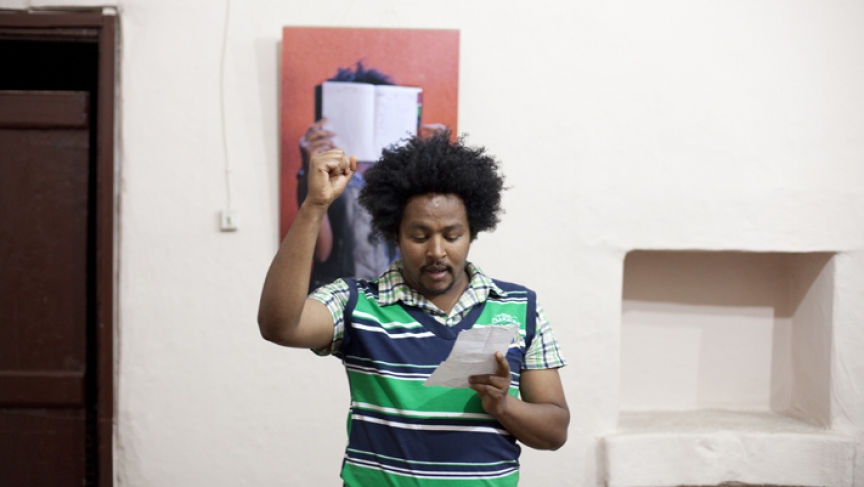10 Countries Facing the Biggest Brain Drain
 Brain
drain, also known as human capital flight, is a serious issue in many
parts of the world, as skilled professionals seek out work abroad rather
than returning to work in their home country. Many are driven away by
high unemployment, but issues like political oppression, lack of
religious freedom and simply not being able to earn a big enough
paycheck also play a significant role in exacerbating brain drain. The
phenomenon is not only a serious economic issue (both in that the
country loses workers and the money it put into training them in college),
but one that often puts the health and safety of the nation’s citizens
at risk, creating long-term and potentially disastrous results for
countries with high brain drain rates spanning several decades.
Brain
drain, also known as human capital flight, is a serious issue in many
parts of the world, as skilled professionals seek out work abroad rather
than returning to work in their home country. Many are driven away by
high unemployment, but issues like political oppression, lack of
religious freedom and simply not being able to earn a big enough
paycheck also play a significant role in exacerbating brain drain. The
phenomenon is not only a serious economic issue (both in that the
country loses workers and the money it put into training them in college),
but one that often puts the health and safety of the nation’s citizens
at risk, creating long-term and potentially disastrous results for
countries with high brain drain rates spanning several decades.Here we’ve compiled a list of some of the nations that have been hardest hit by brain drain in that past few years. While some are making progress in reversing the process, others are seeing numbers rise and citizens migrating in larger numbers every year. These nations, often those in the developing world, must make major economic and social changes if they hope to retain their best and most skilled workers over the long term.
-
Ethiopia: Ethiopia produces a large number of qualified professionals, especially in the medical field, but is experiencing one of the worst brain drains
of any country in the world. Attracted by better prospects overseas and
in other African nations and pushed out by political persecution,
Ethiopia’s best and brightest haven’t been sticking around after
graduation. A recent study presented at the National Symposium on
Ethiopian Diasporas revealed some shocking numbers, with the country
losing about 75% of its skilled professionals over the past ten years.
This exodus of highly qualified professionals has had a huge impact on
the country, leaving it with too few physicians, engineers and
scientists to fill positions the country desperately needs to thrive
economically.
-
Nigeria: Nigeria
is another African nation that has suffered due to a massive brain
drain. With much of Nigeria still essentially a developing nation with
unreliable power and few resources, higher level science, engineering
and medical professionals often find little to motivate them into
staying, especially with job offers from the U.S. and European nations
exerting a powerful pull. Since Nigeria’s brutal civil war in late 60s,
the country has bounced between military governments and dictatorships,
pushing out between 11 and 17 million people. Today, over 2 million Nigerians
live in the U.S. alone, and of these about 20,000 are doctors and over
10,000 are academics. That’s a heavy loss for a nation that so
desperately needs qualified professionals to rebuild and improve its own
resources.
-
Kenya: High
unemployment rates, lack of resources and other factors have made Kenya
one of the top brain drain countries in Africa. With fewer than 30% of
Kenyans who study overseas returning to work in Kenya, the nation is
feeling the hurt of losing so many skilled professionals. The Kenyan
Medical Association has warned that emigration of medical professionals
may make it impossible to provide health care to the country’s residents
– and the situation is already pretty dire. As of 2002, the public
sector medical field had only 600 doctors and 70 dentists available to
treat over 28 million citizens. With somewhere between 500,000 and 1.8
million Kenyans working and living overseas, the country is trying
desperately to find a way to lure some of these citizens back home where
their skills are much needed.
-
South Africa: Years
of unrest, high crime rates, AIDS and lack of jobs have combined to
make South Africa’s brain drain a serious problem. Over the past three
years, the country has lost over 100,000 workers, with an additional 70%
of skilled South Africans saying they are considering leaving the
nation. Losing so many skilled workers has a ripple effect, with the
loss of each skilled professional costing about 10 unskilled jobs.
Currently, the country is working to not only keep residents from
leaving once they’ve completed their training, but to also attract
professionals from other nations to South African businesses. Though
there is still a long way to go to make this a reality.
-
Iran: In
2006, the IMF ranked Iran the highest in brain drain among 90 countries
(both developed and less developed), with over 180,000 people leaving
each year due to a poor job market and oppressive social conditions. In
fact, it is estimated that over 25% of Iranians with post-secondary
degrees live and work abroad, adding up to a total of 4 million Iranians
living overseas.
While the outflux of Iranians was scoffed at in the early 80′s by
government officials, today Iran is doing more to keep their skilled
professionals at home, creating several national foundations aimed at
improving the conditions for students in the sciences and increasing the
number of graduate programs. Why pay attention now? Iran’s brain drain
is estimated to cost the country over $50 billion each year in economic
losses.
-
China: China
has become a major player in global economics, but despite a rapidly
growing job force, it is having trouble hanging on to qualified
professionals. Many believe the reason lies in censorship and lack of
freedoms (including the one child policy), but whatever the true cause,
70% of Chinese students who study overseas never return to their
homeland. Since 1978, over 1 million Chinese students have headed to
universities located abroad to get their degrees, yet fewer than 275,000
have returned. In fact, many foreign schools actually work to attract
Chinese students, only exacerbating the problem for a nation in need of
top scientists and researchers. The Chinese government has worked hard
to reverse the trend, providing top-tier students in science and
engineering with a large number of incentives, yet the numbers are only
growing larger. By the end of this year, the nation could see well over
200,000 students leaving.
-
Mexico: Mexican
immigration is a big issue in the U.S., with tens of thousands of
illegal immigrants crossing U.S. borders each year. Yet a large portion
of Mexican immigrants don’t fit this stereotype and are wealthy,
well-educated and enter the country quite legally. Mexico is seeing a
huge brain drain as more middle- and upper-class citizens move abroad,
many who hold higher degrees and work in professional fields like
medicine and law. The biggest cause for this is unemployment, with
hundreds of thousands of skilled workers unable to find work, though
security issues also play a big role. The higher the level of education,
the less likely workers are to stay in Mexico, with about 70% of
Mexicans with a PhD
coming to work in America. The brain drain is worst in the sciences,
where 79% of students who come to study in America never return home.
-
Jamaica: In
a trend common for Caribbean nations, Jamaica faces one of the biggest
brain drains in the region. Over 80% of Jamaica’s citizens who’ve
obtained higher education live abroad. Most of this migration is due to
lack of jobs, as there simply aren’t enough to go around for young
graduates from university programs. What makes this loss so striking
isn’t just the high percentage, but that Jamaican citizens who choose to
work abroad must pay a remittance to the Jamaican government. Even with
these additional fees, students aren’t enticed into staying to work in
Jamaica. While much attention has been paid to the issue in recent
years, little has changed and Jamaica. Along with Haiti, Suriname,
Guyana and Grenada are losing between 70-90% of their college-educated
force each year.
-
Malaysia: The
brain drain in Malaysia has been steadily worsening, with the World
Bank projecting it to intensify over the next few years. Currently, two
out of every ten Malaysians with higher education seeks employment
elsewhere, accounting for about 305,000 immigrants in 2009. There are a
number of factors that contribute to this mass emigration, including job
opportunities, political corruption and lack of religious freedom.
Malaysia made big economic strides in the 90s, but growth has been
halved in the past decade, slowing from 7.2% to just 4.6%. Experts
believe this is largely due to brain drain, and caution that the nation
could see serious economic issues if it doesn’t do something more to
encourage professionals to work in their home country.
-
England: While
it isn’t seeing staggering losses like many countries on this list, it
is valuable to see how brain drain is a problem even in developed and
relatively wealthy nations like Britain. Over the past few years,
England has seen a large number of its skilled professionals leaving for
work abroad, with over 1.1 million university graduates living and
working outside of the country. This accounts for almost 1 in 10 skilled
citizens choosing to emigrate. This mass emigration of skilled
professionals may have serious ramifications for the British economy, as
professionals add to the workforce of nations like Australia, Canada,
America, France and Spain rather than at home. When compared to other
developed nations, these numbers are especially high, with only Germany
coming close in terms of losses (with 860,000 workers lost), making it
clear that even top nations with good schools, public health and lots of
resources can be subject to brain drain.
source: www.onlineuniversities.com







 Ethiopian
Airlines, the fastest growing airline in Africa, is pleased to announce
that it will extend its wings to Singapore as of 3 December 2013 with
scheduled three weekly flights.
Ethiopian
Airlines, the fastest growing airline in Africa, is pleased to announce
that it will extend its wings to Singapore as of 3 December 2013 with
scheduled three weekly flights.


